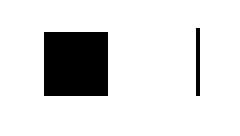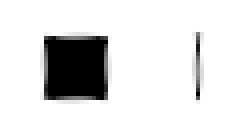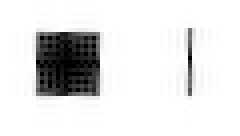Difference between revisions of "Interpolation"
Erik Krause (talk | contribs) m (→Echos: accent) |
Erik Krause (talk | contribs) m (→Types: made links more obvious) |
||
| (3 intermediate revisions by the same user not shown) | |||
| Line 1: | Line 1: | ||
| + | {{Glossary|A mathematical way to estimate a value in between two values. In image processing: The pixel color and brightness in between two pixels.}} | ||
=== Definition === | === Definition === | ||
For panorama creation images have to be changed in geometry, they have to be remapped. Since image content is rastered in pixels it has to be moved to different pixels. In most cases a destination pixel does not correspond exactly with the location of a source pixel, it lies somewhere in between. The process of getting the best image content from in between some pixels is called interpolation. | For panorama creation images have to be changed in geometry, they have to be remapped. Since image content is rastered in pixels it has to be moved to different pixels. In most cases a destination pixel does not correspond exactly with the location of a source pixel, it lies somewhere in between. The process of getting the best image content from in between some pixels is called interpolation. | ||
=== Types === | === Types === | ||
| − | There are several types of interpolation used in Panotools, from fast but not so good ones to very slow but precise ones. There is a comparison of the different types by Helmut Dersch: | + | There are several types of interpolation used in Panotools, from fast but not so good ones to very slow but precise ones. There is a comparison of the different types by Helmut Dersch: http://www.panotools.org/dersch/interpolator/interpolator.html Jim Watters extended this test to some interpolators that where introduced later and added some timing information: http://photocreations.ca/interpolator/index.html |
=== Issues === | === Issues === | ||
==== Aliasing ==== | ==== Aliasing ==== | ||
| − | If the image content is reduced significantly in size such that original image detail will be | + | If the image content is reduced significantly in size such that original image detail will be smaller than pixel size in the result image an effect called aliasing occures. Better image processors use an anti aliasing filter to prevent this. Panotools prior to version 2.7.0.11 do not use such a filter and hence should not be used to downsample images. Newer versions have additional anti-aliasing filters - the old filters still cause aliasing. See [[Aliasing]] article for details. |
==== Echos ==== | ==== Echos ==== | ||
Revision as of 18:14, 15 December 2015
Definition
For panorama creation images have to be changed in geometry, they have to be remapped. Since image content is rastered in pixels it has to be moved to different pixels. In most cases a destination pixel does not correspond exactly with the location of a source pixel, it lies somewhere in between. The process of getting the best image content from in between some pixels is called interpolation.
Types
There are several types of interpolation used in Panotools, from fast but not so good ones to very slow but precise ones. There is a comparison of the different types by Helmut Dersch: http://www.panotools.org/dersch/interpolator/interpolator.html Jim Watters extended this test to some interpolators that where introduced later and added some timing information: http://photocreations.ca/interpolator/index.html
Issues
Aliasing
If the image content is reduced significantly in size such that original image detail will be smaller than pixel size in the result image an effect called aliasing occures. Better image processors use an anti aliasing filter to prevent this. Panotools prior to version 2.7.0.11 do not use such a filter and hence should not be used to downsample images. Newer versions have additional anti-aliasing filters - the old filters still cause aliasing. See Aliasing article for details.
Echos
Although the large kernel sinc interpolators (sinc256 and sinc1024) are far superior if you have small regular details that most likely will cause moiré with less sophisticated interpolators there is some drawback using the sinc versions if you have hard edges. They cause some echos of the edge in either direction. The example images below (enlarged to 400%) have been only interpolated twice - one rotation 5 degrees to the left and one rotation 5 degrees to the right.
--Erik Krause 05:59, 6 Jul 2005 (EDT)


